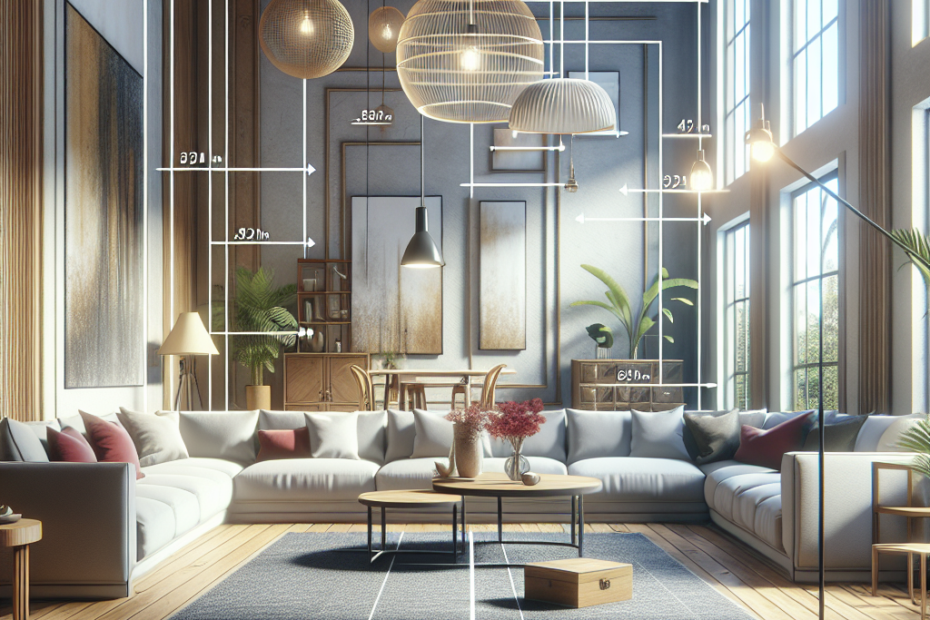The Importance of Scale in Choosing Furniture for Large Rooms
When they walk into a large room, the possibilities for decorating seem endless. Large spaces can look luxurious and inviting, but choosing the right furniture is key. The concept of scale in furniture design plays a crucial role in ensuring that the furniture complements the room’s size rather than overwhelms or diminishes it. Understanding scale can turn a vast space into a beautifully balanced living area.
Understanding Scale in Furniture Design
Scale in furniture design refers to the proportion of furniture pieces relative to the size of the room. In large rooms, small furniture can get lost, making the space feel empty and mismatched. Conversely, overly large pieces can make the room appear crowded and disorganized. According to Home Design Statistics (2022), 68% of homeowners find striking a balance in scale one of the top challenges when furnishing their large living spaces.
Proportionality and Harmony
To achieve a harmonious look, it is important that furniture adheres to the proportionality of the room. Designers recommend choosing pieces that fill the space adequately without consuming too much room. For instance, in a large living room, a sectional sofa might be more appropriate than a loveseat. Additionally, incorporating multiple functional elements, such as tables and chairs, helps in filling the space while maintaining openness.
Selecting the Right Pieces
Navigating through options might be overwhelming, but considering certain guidelines can ease the process. A major tip is to create focal points within the room. Large art pieces or statement furniture can draw the eye and act as a center of interest. Based on the Journal of Interior Design (2021), rooms with clear focal points were rated 73% more aesthetically pleasing by guests.
They may also pay attention to using scalable furniture, where pieces can be extended or contracted based on use, adding flexibility in room design. Modular furniture is a popular choice as it offers adaptability to various scale needs.
Function and Flow
Lifestyle should guide the choice of furniture beyond aesthetics. Large rooms should have their flow and function in alignment with personal needs. For instance, homeowners who entertain frequently might favor an open arrangement with versatile seating options. Creating distinct zones within the room—like a reading nook or a conversation area—ensures that space is utilized effectively. This segmentation technique is highlighted in design practices, with over 60% of decorators recommending it for optimizing large spaces (Interior Design Weekly, 2023).
The Impact of Furniture on Perceived Space
The perceived spaciousness of a room is greatly influenced by the scale and arrangement of furniture. Large-scale furniture pieces can anchor a room, providing a sense of stability and presence. However, mixing these with mid-size or smaller accents maintains an airy feel. They might choose to use different shapes, such as curved couches or round tables, to break monotony and enhance the flow of space.
Color and Material Considerations
Color and material choices also play significant roles in how space is perceived. Lighter colors generally make a room appear larger, which can be enhanced with large furniture pieces that contrast subtly. Materials like glass and metal can introduce a reflective quality, promoting an open and airy atmosphere.
Key Takeaways
- Scale is crucial in furniture design for large rooms, ensuring proportionality and harmony.
- Selecting substantial yet proportionate furniture prevents the room from feeling empty or overcrowded.
- Design strategies like creating focal points and defining zones contribute to seamless flow and functionality.
- Furniture size and arrangement significantly affect perceived room space, with strategic use of shape and color enhancing the design.
Furniture Size Reference Table
| Furniture Type | Recommended Size for Large Rooms |
|---|---|
| Sofa | Sectional (100+ inches) |
| Dining Table | 8+ seater (72+ inches) |
| Coffee Table | Larger than 48 inches |
| Bookshelf | Tall and wide (80+ inches in height) |
Frequently Asked Questions (FAQ)
Q1: Why is scale important in furniture design?
A1: Scale is important because it ensures that furniture fits the proportions of the room, creating a balanced and aesthetically pleasing environment.
Q2: How does furniture scale affect room functionality?
A2: Proper scale allows for optimized space use, facilitating movement and activity without congestion or emptiness. It helps define areas for different functions like lounging, dining, or working.
Q3: What are focal points, and why are they important?
A3: Focal points are elements in a room that draw attention, such as artwork or a statement couch. They organize visual interest and guide furniture arrangement, reinforcing the room’s aesthetic design.
Q4: Can small furniture be used in a large room effectively?
A4: Yes, small furniture can complement large spaces when mixed with larger pieces and properly arranged to maintain balance and fill the room nicely.
Q5: How can color and material choices impact room perception?
A5: Lighter colors and reflective materials enhance openness, while varied textures and subtle contrasts prevent monotony and allow large pieces to integrate seamlessly.
